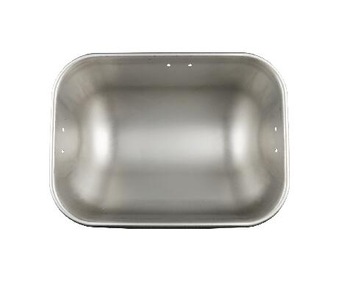Symptoms and Control of Cucumber Bacterial Kerb Disease
Symptoms: Cucumber bacterial angular spot disease occurs early in China. It used to occur mainly in spring dew, and it was severe when it was cloudy and there was strong wind. With the development of the protected cultivation, bacterial bacterial keratoses have become more and more serious, and have become a major threat to cucumber production. Cucumber can be infected from seedlings to adult plants. In addition to invading leaves, pathogens can infect stems, petioles, tendrils, and fruits. The cotyledons became infected. The back of the leaves was immersed in a round spot on the back of the leaves. When the humidity was high, white bacilli were found on the back of the leaves. When the air was dry, the diseased part left a white film. The diseased part of the disease is faded green and spreads irregularly along the veins. The lesions can heal into large spots. When the disease is severe, the entire leaf is dry. The true leaves were infected, and they were initially immersed in a round lesion. When the humidity was high, the bacterium showed pus on the back of the leaves. The lesions showed a polygonal shape along the veins and the diseased part was transparent. At the late stage of disease, the diseased department became yellowish-white, surrounded by yellowish-brown, and the diseased department rotted and detached to form a perforation. The lesions performed differently on the leaves of different resistant varieties. The disease-resistant varieties had small lesions and less pyometha. The susceptible varieties had more lesions and more pyogenic bacteria. Petiole, stem damage, forming strip lesions along the stem groove, and depression, sometimes cracking, when the humidity is high, the disease department has bacillary pyuria, bacteria and pus flow down the stem groove, forming a white trace. The tendril suffers, and the disease department rots and breaks when severe. The fruit is affected. In the initial stage, the diseased part is immersed in spots and slightly sag. When the humidity is high in the later period, the diseased part produces a large amount of bacteria and pus. When the fruit is damaged in many places, the surface of the fruit is covered with water-ball-shaped bacteria and pus; the soft rot of the fruit has odor, and the bacteria can invade the seeds to carry the bacteria. Prevention: 1 Selection of disease-resistant varieties: Protected land variety Jinchun No. 1 has strong resistance to angular spot disease suitable for greenhouse and greenhouse cultivation. 2 Select disease-free seed or seed disinfection before sowing: The specific method is: after the seeds are air-dried, heat-sterilize in the incubator at 70°C for 72 hours, or soak in warm water at 50°C for 20 minutes; 300 times of calcium hypochlorite is used for soaking 30- - 60 minutes; 1 million units of streptomycin sulfate 500 times soaking for 2 hours, etc. can effectively kill the bacteria. 3 anti-infection: no soil seedlings to prevent seedling infection. 4 Rotation: Two years or more of rotation with non-melon crops. 5Cultivation and ecological control: cover the film, reduce the humidity in the field, release air in time, and avoid causing wounds. 6 chemical control: more effective drugs, 50% DT WP 500 times, 60% DMSO aluminum (DTM) WP 500 times, streptomycin sulfate or 72% streptomycin Streptomycin 4000 times ,150--200mg/kg neomycin, 77% Fenghuean WP 2.25--3.0kg/ha and so on.
The sow through is our Honde brand of high quality sow raising equipment, made of high quality stainless steel SST 304 and featuring automatic welding technology with a thickness of 1mm to 1.2mm and the robustness of the sow through. The depth of the sow through is moderate, which allows it to contain enough food and avoid food waste. The size of the sow through There are many, to meet different needs, it is very convenient. At the same time, the edge of the sow through is smooth and strong, preventing pigs from being harmed while using it. the sow through makes it easy and convenient for your sow to feed, and sows that have used the sow through grow well.
1231
Sow Trough,Sow Plastic Trough,Plastic Sow Feed Trough,Sow Feeding Trough,Pig Feed Trough HuangHua FengYi Honde Metal Factory , https://www.farrowingcratesfromchina.com
Art
Spec
Thickness
Material
455*370*230mm
1mm
SST 304
1231
455*370*230mm
1.2mm
SST 304
1233
530*390*230mm
1.2mm
SST 304
